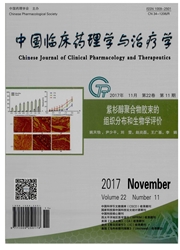

 中文摘要:
中文摘要:
肿瘤治疗是近年来药物研发的热点,但肿瘤仍是全球致死率最高的疾病之一。造成这一现象的主要原因之一在于药物的PK/PD行为不佳,临床转化失败率极高。因此,完善药物临床前的动力学评价体系十分必要。由于在体动物模型的评价体系无法解释大量靶点在细胞内的抗肿瘤药物的动力学特征;单层细胞模型作为主流的体外评价模式,与实体瘤内的真实情况相差甚远。因此,亟需建立一种新的评价体系。三维细胞模型与传统的二维单层细胞相比,能够更真实地模拟实体瘤的生理状态及微环境,可以基于类组织水平、细胞水平、亚细胞水平全面评价药物的动力学行为,弥补了体内外研究的不足。本综述将基于以下两个方面对三维细胞及其在药代动力学中的应用进行全面的介绍:(1)三维细胞的培养方法及其与在体肿瘤组织的相似性;(2)三维细胞在抗肿瘤药物的药代动力学评价中的优势及应用。
 英文摘要:
英文摘要:
Despite significant improvements in ways to treat cancer,numerous patients still die from it.One of the important reasons for this problem is that high failure of clinical transformation ratio due largely to poor PK/PD behavior.As time moves on,many new data increasingly reveal that traditional pharmacokinetics study in vivo cannot totally explain the efficacy of drug targeting on the intra-cell.Previously 2D cell culture has been the most popular in vivo models in drug screening and R&D.However,2D cell culture techniques do not faithfully replicate all of the mechanical and biochemical signals present in vivo.It is necessary to improve the early drug developmental stage to evaluate new drugs or drug combinations.3D cell culture systems can reproduce the characteristics of solid tumors in vivo vividly.Growing cells such as 3D models used in cellular pharmacokinetics break a new through on cell based assay and evaluation of anti-cancer drugs.This review aims first to shortly report on 3D culture systems currently and second to introduce the applications and advantages of cellular pharmacokinetics evaluation of anti-cancer drugs based on 3 D cell model.
 同期刊论文项目
同期刊论文项目
 同项目期刊论文
同项目期刊论文
 期刊信息
期刊信息
